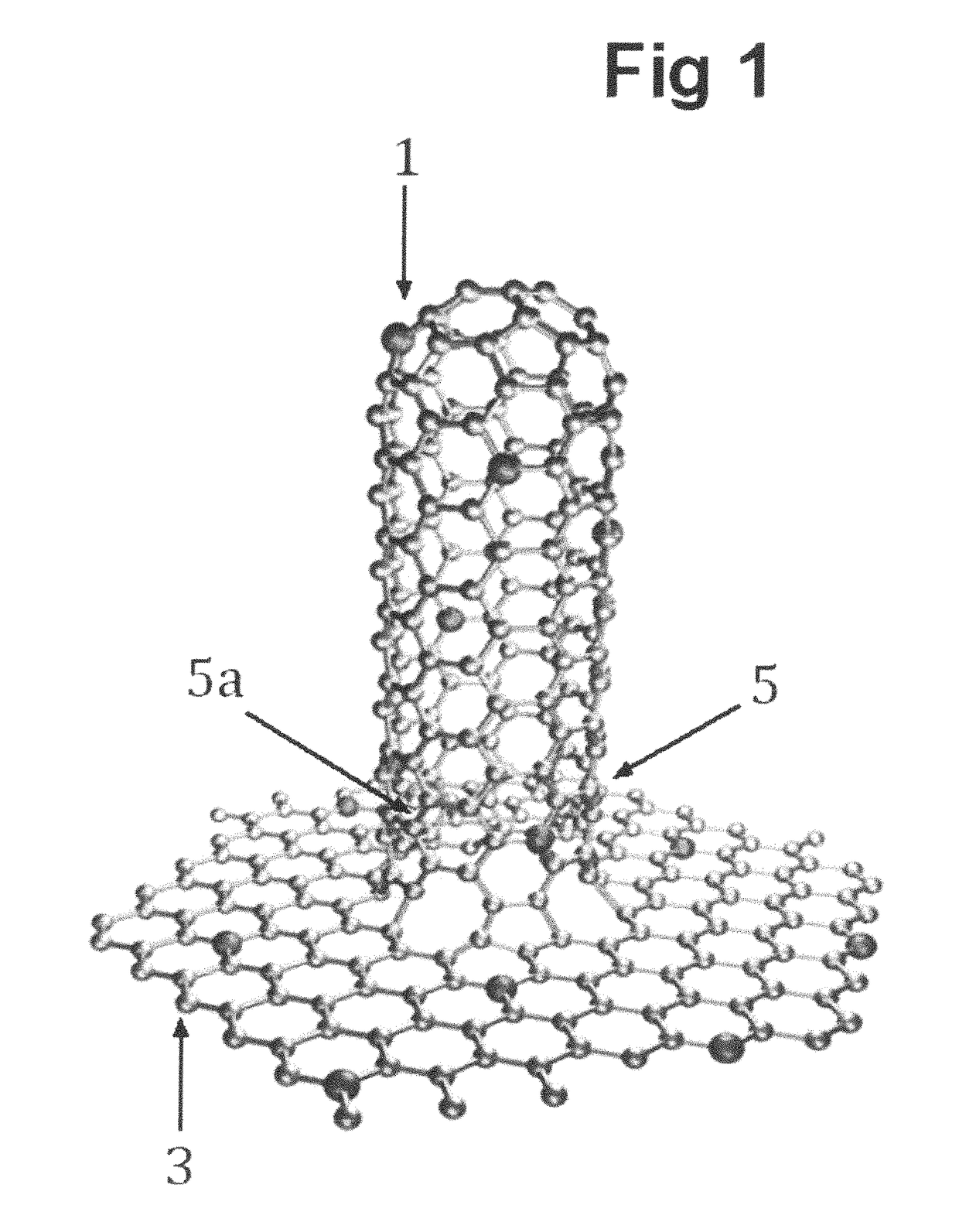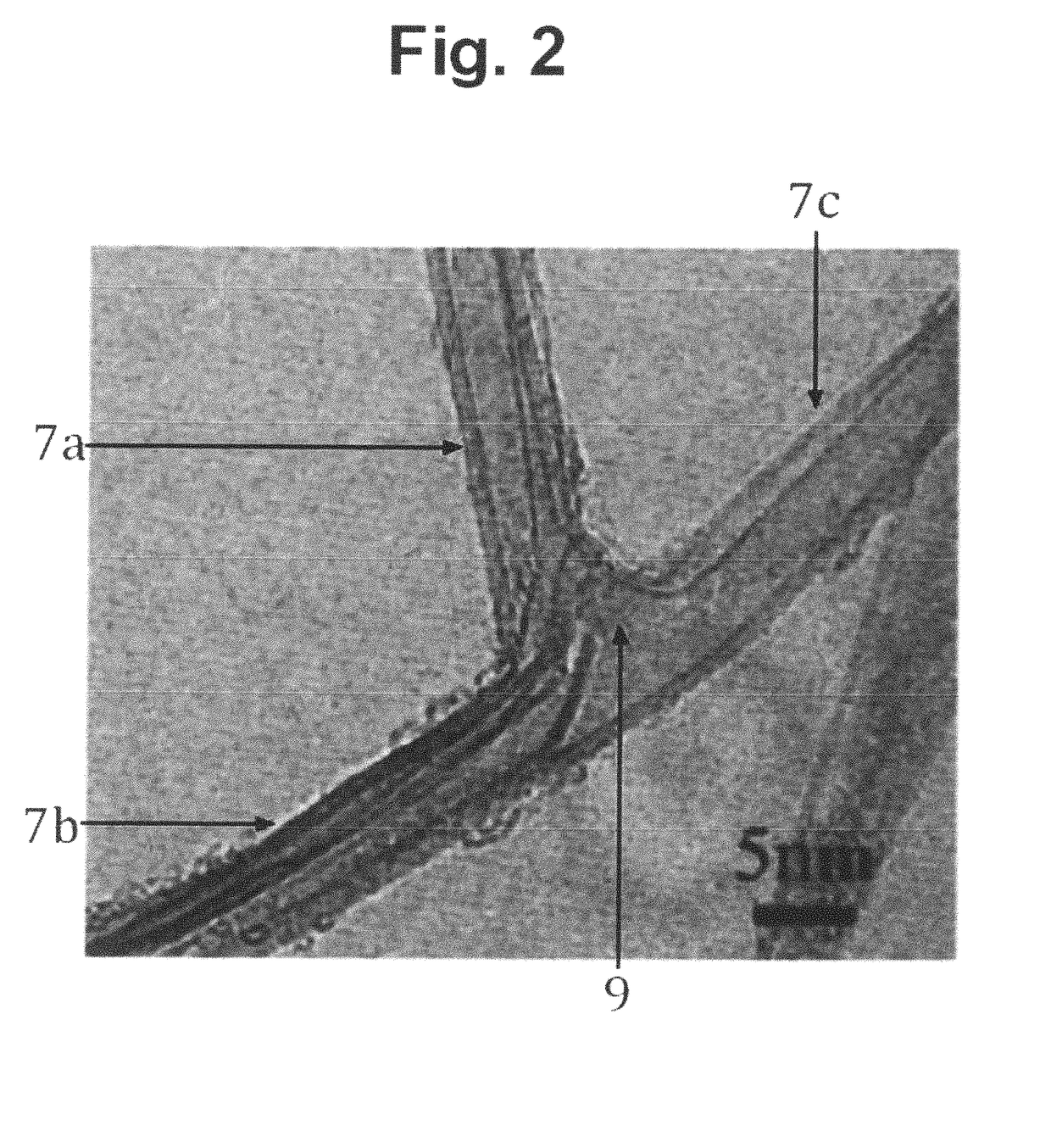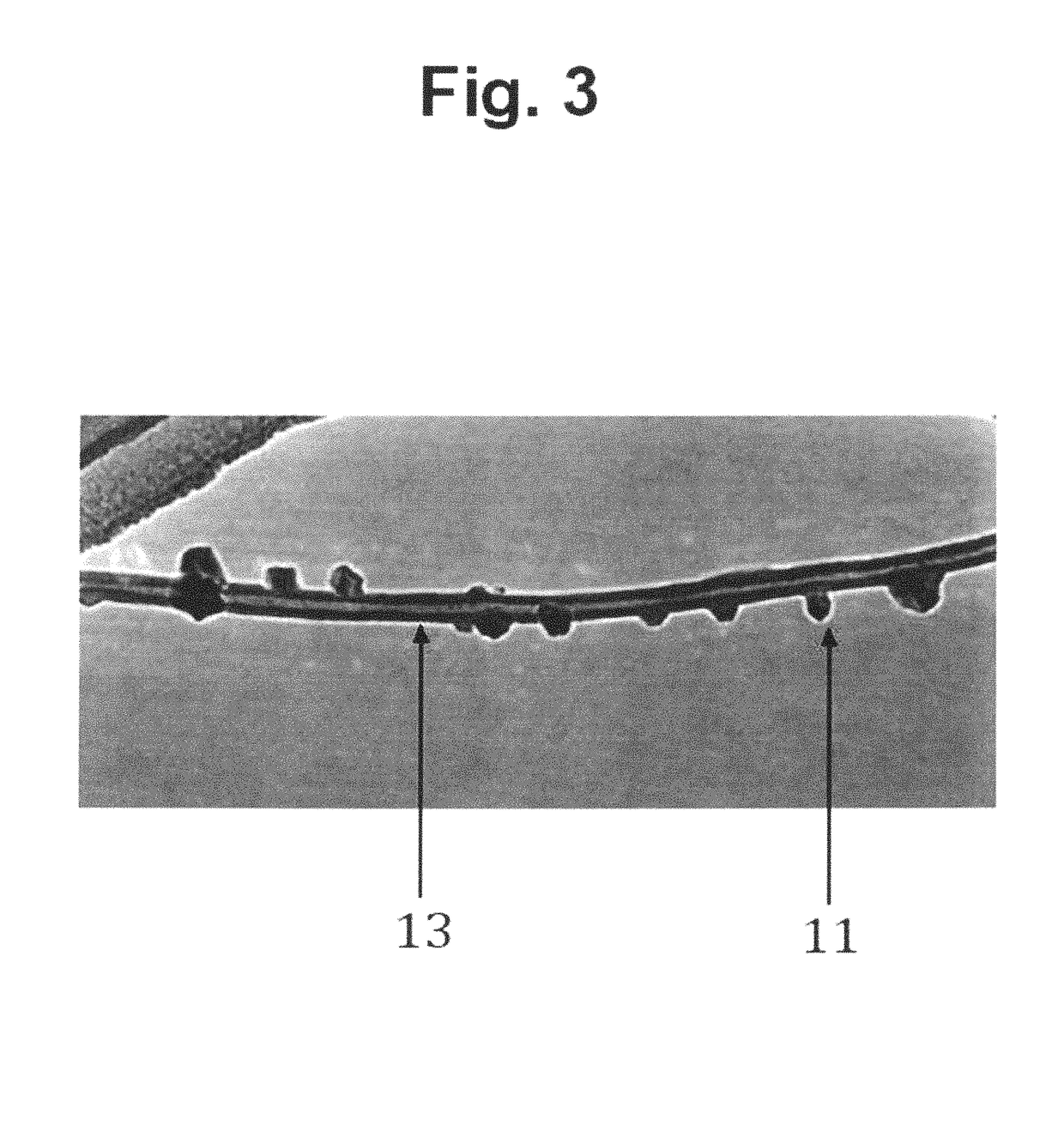Ultra high strength nanomaterials and methods of manufacture
- Summary
- Abstract
- Description
- Claims
- Application Information
AI Technical Summary
Benefits of technology
Problems solved by technology
Method used
Image
Examples
Embodiment Construction
Brief Description of Drawings and Reference Numerals
[0030]FIG. 1 Hybrid nanostructure—carbon nanotube fused to graphene nanosheet[0031]1 top of carbon nanotube[0032]3 graphene nanosheet[0033]5 joining region of fused carbon nanotube and graphene structures[0034]5a joining region of fused carbon nanotube and graphene structures
[0035]FIG. 2 Two double walled carbon nanotubes fused together into triple junction[0036]7a double walled carbon nanotube region[0037]7b double walled carbon nanotube region[0038]7c double walled carbon nanotube region[0039]9 triple junction weld
[0040]FIG. 3 TEM image of carbon nanotube with 14 boron carbide nanolumps fused to it[0041]11 boron carbide nanolump fused to multiwalled carbon nanotube[0042]13 multiwalled carbon nanotube
[0043]FIG. 4 Densified carbon nanotube—boron carbide nanolump material[0044]11a MWNT carbon nanotube[0045]13a boron carbide nanolump fused to MWNT[0046]13b boron carbide nanolump fused to MWNT[0047]15 boron carbide nanolump fused betw...
PUM
| Property | Measurement | Unit |
|---|---|---|
| Temperature | aaaaa | aaaaa |
| Temperature | aaaaa | aaaaa |
| Temperature | aaaaa | aaaaa |
Abstract
Description
Claims
Application Information
 Login to View More
Login to View More - R&D
- Intellectual Property
- Life Sciences
- Materials
- Tech Scout
- Unparalleled Data Quality
- Higher Quality Content
- 60% Fewer Hallucinations
Browse by: Latest US Patents, China's latest patents, Technical Efficacy Thesaurus, Application Domain, Technology Topic, Popular Technical Reports.
© 2025 PatSnap. All rights reserved.Legal|Privacy policy|Modern Slavery Act Transparency Statement|Sitemap|About US| Contact US: help@patsnap.com



